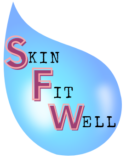Table of Contents
What Is Resorcinol?

Resorcinol is a white, crystallized substance produced popularly in the 90s for the making of rubber products and wood adhesives (1). It has also been included in pharmaceutical products such as shaving cream, acne treatments, and hair conditioners. Its popularity has dwindled, but is still found in a large amount of products available over the counter today.
Resorcinol can be used to treat acne by breaking down dead skin cells to reveal new skin (1). It has been used in high concentrations (above 1.5%) in chemical peels.
As years pass, we become more inept to understand the products that we are exposed to on a daily basis. In the case of worker safety, workers are constantly exposed to resorcinol, so it is important to look at long-term side effects.
Side Effects
Resorcinol is classified as a strong skin irritant and human endocrine disruptor (2). It has been characterized as a known allergen and is toxic in high concentrations when applied topically. In multiple countries around the world, including Japan and Canada, the use of resorcinol is restricted in cosmetic and pharmaceutical formulations (2). This means that cosmetic regulators have deemed resorcinol unsafe to use in high concentrations and must be further regulated to avoid serious reactions.
When resorcinol was administered orally to rats, significant weight loss was seen overtime. In addition, the survival rate of the rats decreased. In humans, ingestion of resorcinol caused decreased respiration (2).
Human Endocrine Disruptor
The human body contains endocrine glands located throughout the body such as in the brain, neck, and kidneys. These glands release hormones into the blood that travel throughout the body, targeting different organs and playing various roles in metabolism and homeostasis.
Resorcinol has many different chemical names. Therefore, in your skincare products, the ingredient list may not list “resorcinol” at all. Instead it may say 1,3-Dihydroxybenzene or 1,3-benzenediol (3).
As mentioned previously, resorcinol is a major skin sensitizer. Once it makes contact with the skin, it is absorbed by the body and can cause all types of irritation and inflammation. Since resorcinol is used in a variety of products, such as hair dyes, it is constantly in contact with the skin.
Studies have shown that humans can effectively absorb resorcinol through dermal absorption (3). Evidence of skin sensitivity was found. In addition, prolonged exposure of resorcinol to damaged skin has been shown to cause a reduction in thyroid function.
Thyroid Function
The thyroid gland is located at the base of the neck. It releases the thyroid hormone. These hormones are especially important for brain development in the embryo. In adults, it continues to regulate metabolism and mood (4).
In the 50s and 60s, studies showed that patients using resorcinol on the skin resulted in hypothyroidism. This means that there was a reduction in the production of the thyroid hormone. This leads to weight gain, fatigue, and decreased stimulation of the nervous system (4).
Skin, Eye, and Respiratory Irritant
According to Science Direct, skin irritation is characterized by reversible damage to the skin upon application of a substance, and for up to 4 hours following. In the case of the topical application of resorcinol, skin irritation may occur in the form of redness and eczema (5).
It can cause itching, inflammation, and dry patches. It is considered a strong skin irritant and has been shown to cause allergic reactions upon contact with the skin. Dermatitis has also been evident when in contact with resorcinol. This is characterized by red and itchy skin that can blister or become rash-like. Lesions may even ooze and become inflamed and uncomfortable.
In addition, resorcinol is irritating to the eyes and protection should be worn when exposed to high concentrations of this. It has caused corneal perforation, which results in a damaged cornea (5).
Furthermore, exposure to high concentrations of resorcinol can cause respiratory tract irritation if inhaled.
All in all, resorcinol is a strong skin irritant and can have long-term devastating effects on the eyes and respiratory system. It is best to avoid this ingredient, even in small quantities.
References
(1) https://www.ncbi.nlm.nih.gov/books/NBK499455/
(2) https://www.ewg.org/skindeep/ingredients/705539-RESORCINOL-RESORCINOL/
(3) Opinion on Resorcinol. Scientific Committee on Consumer Safety.

